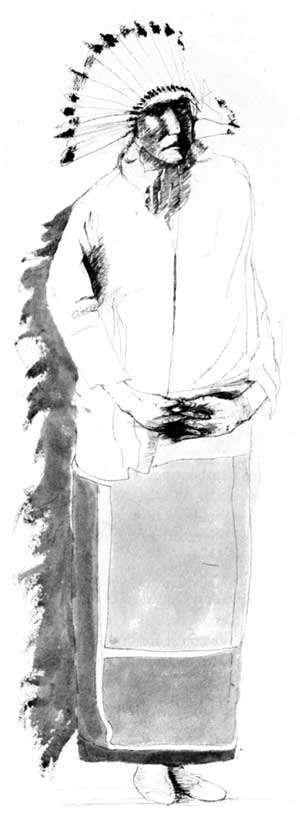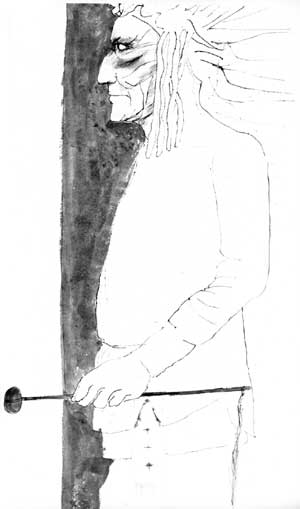|
LITTLE BIGHORN BATTLEFIELD National Monument |
 |

Collapse of the Sioux
After the Battle of the Little Bighorn, the great Sioux and Cheyenne village broke up, the various bands going their separate ways to avoid the soldiers. A shocked and outraged Nation demanded that the slayers of Custer be punished, and soon heavy reinforcements poured up the Missouri.
Throughout the summer the columns of Terry and Crook searched for the hostiles but could bring on no important engagement. By autumn, however, many of the Indian fugitives had tired of the pursuit and, with winter coming on, slipped back to the agencies to surrender. The rest endured months of insecurity as troops braved the perils of a Montana winter to continue the campaign. Several times sleeping camps of Indians awoke to the crash of rifle and carbine fire and the sight of bluecoats among their tepees. With the approach of spring, hundreds drifted into the agencies and gave up. Even Crazy Horse saw the futility of holding out longer. On May 6, 1877, he led a procession of more than 1,100 Sioux into Camp Robinson, Nebr., and laid down his rifle.
Vowing never to accept reservation restraints, Sitting Bull and some 400 Hunkpapa Sioux crossed into Canada. But food was scarce and U.S. soldiers patroled the international boundary, preventing the Indians from hunting buffalo in Montana. Little by little the refugees weakened. First Gall, then Crow King led their followers to Fort Buford to surrender. Finally, in July 1881, Sitting Bull and 43 families appeared at the fort and gave up.

Sitting Bull's surrender formally marked the end of a war that had all but ended 4 years earlier, when the bulk of the hostiles of 1876 had settled on the reservations. In their triumph at the Little Bighorn, the Sioux and Cheyennes had awakened forces that led to their collapse. The Campaign of 1876 had, after all, accomplished the objectives set by its authors. It had compelled the Indians to abandon the unceded hunting grounds and accept Government control on the reservations. And it had frightened the chiefs into selling the Black Hills.
Bitterly the Sioux and Cheyennes submitted to the reservation way of life. Although it contrasted cruelly with the old life, gradually they came to see that the freedom of the past could never be recaptured. For a generation to come, however, old warriors would recall with satisfaction the brief moment of glory when they wiped out Custer's cavalry.

|
|
Last Modified: Sat, Sep 28 2002 10:00:00 pm PDT |


